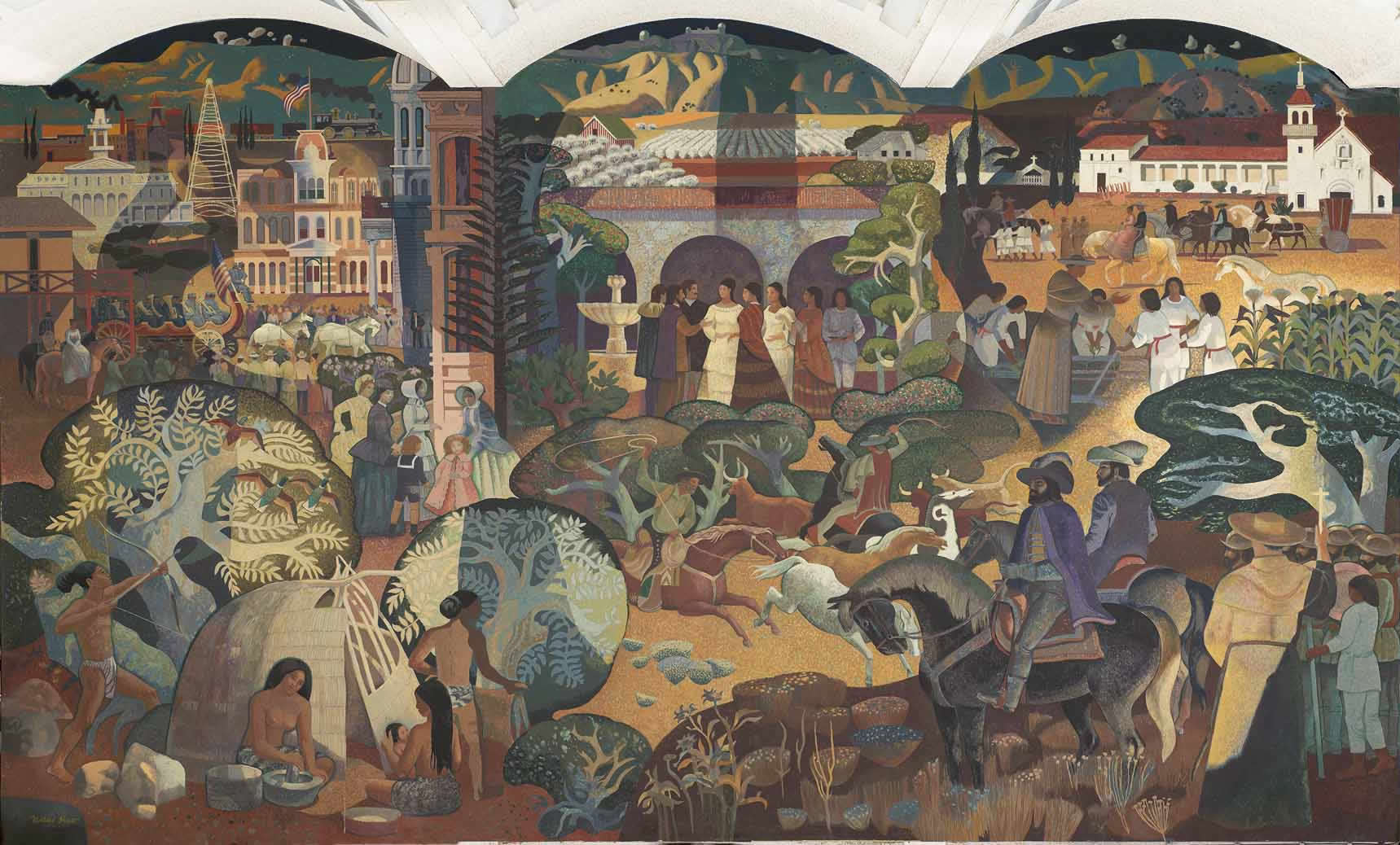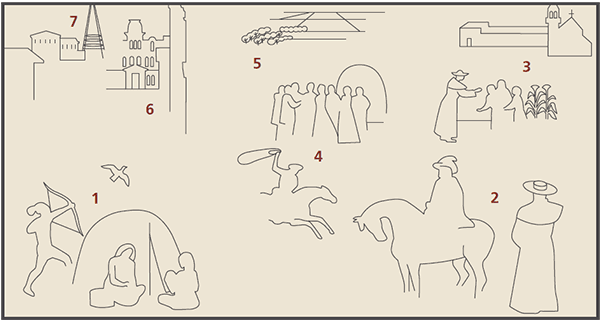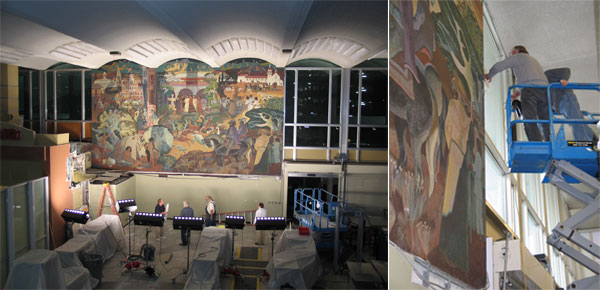A History of San José California’s “First” City
In 1977, the San José Mercury News commissioned artist Millard Sheets to create a 20 x 30 foot mural for the Airport as a gift to the people of San José to celebrate the City of San José’s 200th birthday and the 125th birthday of the newspaper. The mural presents scenes that paid tribute to the area’s heritage.

The mural is intended to be read counter-clockwise (see image below). Starting at the bottom left-hand corner (1) is a group of Ohlone people, the indigenous settlers of this Valley. Spanish colonists (2) shown on the bottom right. The scene shifts to the top right, presentation of (3) the original Santa Clara Mission, and then left to (4) the days of Mexican rancho life in the Valley. Moving further left, the mural depicts (5) blooming orchards, in the upper left-hand corner (6) the beginning of modernization of San José,represented by the building of San José Normal School (now San José State University). San José historic downtown 237-foot electric light tower (7), built in 1881 and demolished in 1915, is the focal point of the upper left.

With the construction of Terminal B and the rerouting of roads around the airport, Terminal C was demolished and the mural had to be removed and relocated. Preserving and moving the mural was no easy task. Efforts began close to two years in advance to understand how to safely remove the mural from the wall. The City if San José’s Public Art Program’s initial work began with a mural/painting conservator to conduct an on-site investigation of the piece, which involved a visual inspection and materials testing of the mural to understand its current condition and installation methods. The artist’s files, archived at the Smithsonian Museum, were attained to inform the process; and Millard Sheets’ family was contacted for additional perspective.
Since the mural was intended to be permanent, it was adhered directly to the sheetrock base with very strong adhesive and was deemed by conservators, “as impossible to remove without significant damage to the canvas and the paint.” The plan for its removal included two special directions. First, the Public Art Program hired a photographer to take high resolution images of the mural so that, if damaged, the artwork could be reproduced full size and installed in another part of the airport. Second, Tony Sheets, Millard Sheets’ son, was invited to participate in the removal of the artwork and see if it was possible to salvage vignettes for reinstallation later. What unfolded was better than we could have expected!
When Tony arrived at the airport and examined the mural, he realized that it was similar to others he had removed in the past. Working with the project contractors from Hensel Phelps Construction, Sheets climbed the scaffolding and, with the assistance of a large round roller and a string for man crew, the mural was peeled from the wall. Except for some difficulty with the initial glued edges, the mural sustained minimal damage. It was a fantastic moment when it was clear that the mural would be preserved.

After months of careful cleaning of the sheetrock from the back of the canvas, the mural was reinstalled at the airport’s international gates. Tony was on hand to touch up the mural and make the call on trimming that was required based on the new site.
